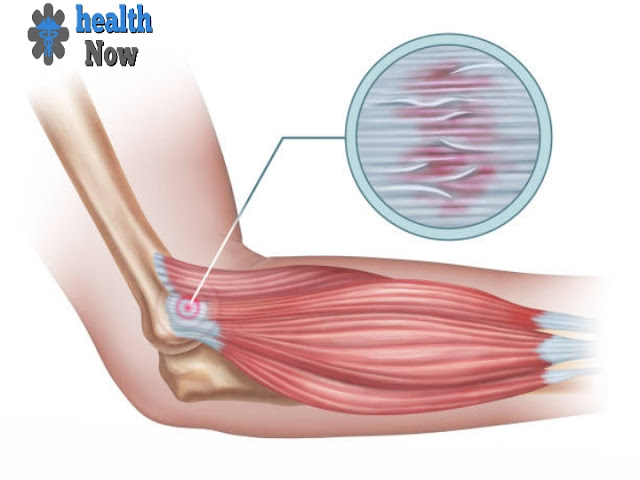A look at a torn elbow ligament.
The elbow joint consists of three components: the humerus, the arm, and the wire. Flexion and extension movements can be performed here, but rotational movements of the forearm are also possible.
The elbow joint is surrounded by a narrow articular capsule, and it is also fixed by several muscles that extend from the upper arm to the forearm, as well as some ligaments.
Movements that exceed the normal range may lead to a torn elbow ligament or one of its components. As in other joints, ligament injuries, for example, torn elbow ligament.
In today's article, we'll talk about Torn elbow ligament causes and diagnosis. Its treatment and risks.
Causes of a torn elbow ligament injury.
Torn elbow ligament is often associated with a dislocated joint.
This requires a strong force on the elbow joint, which moves the forearm and humerus in different directions.
A cleft ligament occurs when the tape is stretched outside its normal range of motion.
This is often the case in sports, when making quick, jerky movements, or when there is violence to the joint, for example in the event of a kick or an accident. It is usually a combination of stretching and twisting motions that leads to a torn elbow ligament.
Symptoms of a torn elbow ligament.
A elbow ligament usually immediately releases a strong, noticeable pain.
As a rule, a person with a torn elbow ligament immediately notices that something is wrong. After that, the joint usually swells quickly. If a torn elbow ligament then the joint is abnormally mobile.
It is also possible that a bruise coil that forms around the affected joint when the vessels are damaged by the mechanism of injury.
How we can diagnose the disease.
A diagnosis of torn elbow ligament must be provided by a doctor, such as an orthopedic surgeon.
If there is doubt, an X-ray examination is done to detect or rule out any bone fractures. In addition, the doctor performs various function tests by moving his arm in different directions to get an overview of the general situation.
Also, an MRI may be useful if a torn elbow ligament cannot be demonstrated or excluded by tests. Here especially soft tissues, including ligaments, can be very well visible and a possible tear can be identified.
Also, possibly damaged structures such as muscles, stock, and blood vessels can be identified on MRI images.
Torn elbow ligament treatment.
In torn elbow ligament In general, if it's a sports injury, take a sports break immediately.
It is important to cool the joint to keep swelling as low as possible. Here are especially suitable ice cubes or one cooling compress, which is pre-wrapped with a cloth to prevent frostbite. You can also cool down quickly with cold water.
Next ought to be a pressure gauze to forestall further enlarging of the joint. It is likewise useful to lift the joint so there is no over the top blood stream.
In any case, if torn elbow ligament is suspected, a doctor should be consulted, who will make a proper diagnosis and begin appropriate treatment. In most cases, if the elbow ligament is torn, the joint will be damaged 4 to 6 weeks after the elbow is paralyzed and should not be overburdened. Then you can start with light training. Even at the time of joint immobilization, the elbow should also be regularly cooled.
Treatment also depends on the accompanying symptoms. For example, is it a dislocated elbow file, it must first be returned to its original position (repositioned). This easy sedation may be necessary.
If, in addition to a torn elbow ligament, bone damage is present, the fracture must also be treated and surgery may be necessary. This should be determined by extent.
Surgical treatment.
Torn elbow ligament usually heals on its own. If it occurs without any side effects, it will be on its own.
Is it still happening? Broken bones, or if several ligaments are torn, in most cases one of them is necessary surgery.
Depending on the extent of the damage, it may be necessary to use elbow plates and screws to re-stabilize them. These remain in the joint after the operation. In some cases, when the extension of the ulna is severely damaged and cannot be reconstructed, a slight instability of the joint remains after the operation.
After the operation, the joint is immobilized with a splint for 6 to 8 weeks.
After 4 weeks at the earliest, light loading will begin. Sports should be avoided for up to 6 months, depending on the degree of injury.
Elbow ligament rupture risks.
Nerves and vessels run the length of the elbow and can be affected if it's a torn elbow ligament. Because a variety of blood vessels near the running elbow joint irritate, they may also be damaged in a torn elbow ligament, especially if it's from violence.
The so-called ulnar nerve runs just below the elbow protrusion from the elbow to the hand and supplies the muscles of the forearm and finger. If this nerve is damaged, it is expressed as muscle weakness, and in sensory disturbances, it affects the forearm on the side of the ulna and hand.
Besides, though an injury can be healed permanent instability of the joint. Depending on how severe it is, an operation to restore stability should be considered.
protection.
- In sports, jerky and unplanned movements often lead to ligament rupture. You can't forbid using force on the elbow either.
- To reduce the risk of sports injuries is an important intensive warm-up, in which the ligaments are stretched widely.
- Avoid lifting heavy weights on the elbow to avoid reaching the torn elbow ligament.
- Not doing rough somersaults without warming up.


